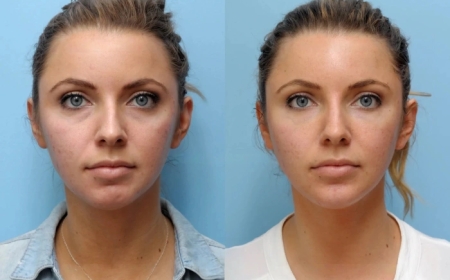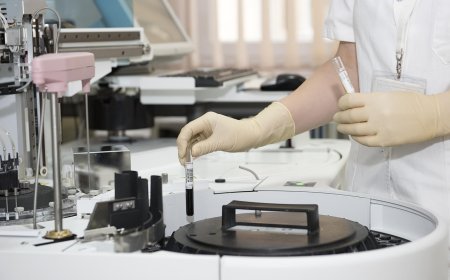Comprehensive Guide to Elbow Pain Causes: Understanding, Diagnosis, and Management
Elbow pain is a common complaint that affects people of all ages and lifestyles, from athletes to office workers. The elbow is a complex joint that facilitates a wide range of arm movements, and its intricate structure makes it susceptible to various injuries and conditions.

Introduction to Elbow Pain
Elbow pain is a common complaint that affects people of all ages and lifestyles, from athletes to office workers. The elbow is a complex joint that facilitates a wide range of arm movements, and its intricate structure makes it susceptible to various injuries and conditions. This comprehensive guide explores the numerous causes of elbow pain, their symptoms, risk factors, diagnostic methods, and management strategies. Whether you're dealing with acute discomfort or chronic pain, understanding the underlying causes is the first step toward effective treatment and prevention.
Elbow pain can stem from overuse, trauma, inflammation, or underlying medical conditions. The elbow joint comprises three bonesthe humerus, radius, and ulnaconnected by ligaments, tendons, and muscles, all of which can be sources of discomfort. Additionally, nerves and blood vessels passing through the elbow can contribute to pain when irritated or compressed. This blog aims to provide an in-depth look at the diverse causes of elbow pain, offering insights for those seeking relief or looking to prevent future issues.
Anatomy of the Elbow
To understand the causes of elbow pain, its essential to grasp the basic anatomy of the elbow joint. The elbow is a hinge joint that allows for flexion, extension, and limited rotation of the forearm. Key components include:
-
Bones: The humerus (upper arm bone), radius, and ulna (forearm bones) form the elbow joint. The olecranon, a bony prominence of the ulna, is commonly known as the "funny bone."
-
Ligaments: The medial collateral ligament (MCL) and lateral collateral ligament (LCL) stabilize the joint, while the annular ligament encircles the radius to allow rotation.
-
Tendons: Tendons connect muscles to bones, such as the biceps tendon (for flexion) and triceps tendon (for extension).
-
Muscles: The biceps, triceps, and forearm muscles enable movement and provide strength.
-
Nerves: The ulnar, radial, and median nerves pass through the elbow, controlling sensation and movement in the arm and hand.
-
Bursa: Small fluid-filled sacs, like the olecranon bursa, reduce friction between tissues.
Injuries or conditions affecting any of these structures can lead to elbow pain, ranging from mild discomfort to debilitating conditions requiring medical intervention.
Common Causes of Elbow Pain
Elbow pain can arise from a variety of sources, including mechanical injuries, inflammatory conditions, nerve issues, and systemic diseases. Below, we categorize the causes into several broad groups, each with detailed explanations and examples.
1. Overuse Injuries
Overuse injuries occur when repetitive motions stress the elbows tissues, leading to microtears, inflammation, or degeneration. These injuries are common in athletes, manual laborers, and individuals with repetitive job tasks.
a. Lateral Epicondylitis (Tennis Elbow)
Lateral epicondylitis, commonly known as tennis elbow, is one of the most prevalent causes of elbow pain. It results from overuse of the forearm muscles and tendons, particularly those involved in wrist extension. Despite its name, tennis elbow affects not only tennis players but also anyone engaging in repetitive gripping or wrist-twisting activities, such as painters, carpenters, or typists.
-
Symptoms: Pain and tenderness on the outer elbow, worsened by gripping or lifting objects.
-
Causes: Repetitive wrist extension, forceful gripping, or improper technique in sports or work.
-
Risk Factors: Age (3050 years), repetitive activities, and poor ergonomics.
-
Diagnosis: Physical examination, including resisted wrist extension tests, and sometimes imaging like ultrasound or MRI.
-
Management: Rest, ice, physical therapy, bracing, and, in severe cases, corticosteroid injections or surgery.
b. Medial Epicondylitis (Golfers Elbow)
Medial epicondylitis, or golfers elbow, is similar to tennis elbow but affects the inner elbow. It involves inflammation or microtears in the tendons that flex the wrist and fingers.
-
Symptoms: Pain and tenderness on the inner elbow, stiffness, and weakness in the wrist or hand.
-
Causes: Repetitive wrist flexion, throwing motions, or forceful gripping, common in golfers, pitchers, or weightlifters.
-
Risk Factors: Repetitive arm motions, improper sports technique, and occupational strain.
-
Diagnosis: Physical exams, including resisted wrist flexion tests, and imaging to rule out other conditions.
-
Management: Rest, ice, stretching, strengthening exercises, and, in persistent cases, injections or surgery.
c. Olecranon Bursitis
Olecranon bursitis occurs when the bursa at the tip of the elbow becomes inflamed, often due to repetitive pressure or trauma. The bursa swells, causing a noticeable lump and pain.
-
Symptoms: Swelling, tenderness, and a warm, red lump at the elbows tip.
-
Causes: Prolonged leaning on the elbow, trauma, or infection (septic bursitis).
-
Risk Factors: Jobs requiring leaning on hard surfaces, sports injuries, and systemic conditions like gout.
-
Diagnosis: Physical exam, fluid aspiration for infection testing, and imaging to assess joint involvement.
-
Management: Rest, ice, compression, aspiration, antibiotics for infection, or surgical bursa removal in chronic cases.
d. Cubital Tunnel Syndrome
Cubital tunnel syndrome results from compression of the ulnar nerve at the elbow, often due to repetitive bending or prolonged pressure on the nerve.
-
Symptoms: Tingling, numbness, or pain in the ring and little fingers, elbow discomfort, and hand weakness.
-
Causes: Repetitive elbow flexion, leaning on the elbow, or direct pressure on the ulnar nerve.
-
Risk Factors: Prolonged computer use, improper posture, and anatomical variations.
-
Diagnosis: Nerve conduction studies, electromyography (EMG), and physical exams like Tinels sign.
-
Management: Activity modification, bracing, physical therapy, or surgical decompression in severe cases.
2. Traumatic Injuries
Trauma to the elbow, whether from a fall, impact, or accident, can cause immediate and severe pain. These injuries often require urgent medical attention.
a. Fractures
Elbow fractures involve breaks in the humerus, radius, or ulna. Common types include olecranon fractures, radial head fractures, and distal humerus fractures.
-
Symptoms: Severe pain, swelling, bruising, and inability to move the elbow.
-
Causes: Falls, direct blows, or high-impact accidents.
-
Risk Factors: High-risk sports, osteoporosis, and motor vehicle accidents.
-
Diagnosis: X-rays, CT scans, or MRI to assess fracture severity.
-
Management: Immobilization with a cast or splint, surgical fixation for displaced fractures, and rehabilitation.
b. Dislocations
Elbow dislocations occur when the bones of the elbow are forced out of alignment, often accompanied by ligament or soft tissue damage.
-
Symptoms: Visible deformity, intense pain, swelling, and loss of elbow movement.
-
Causes: Falls, sports injuries, or trauma that forces the elbow beyond its normal range.
-
Risk Factors: Contact sports, previous dislocations, or joint hypermobility.
-
Diagnosis: X-rays to confirm dislocation and check for fractures.
-
Management: Closed reduction (realigning the joint), immobilization, and physical therapy. Surgery may be needed for complex dislocations.
c. Ligament Sprains and Tears
Ligament injuries, such as sprains or tears of the MCL or LCL, occur when the elbow is overstretched or torn due to trauma or repetitive stress.
-
Symptoms: Pain, swelling, instability, and difficulty moving the elbow.
-
Causes: Sudden twisting motions, throwing sports, or direct impact.
-
Risk Factors: Athletes (e.g., baseball pitchers), repetitive throwing, or joint laxity.
-
Diagnosis: Physical exams, stress tests, and MRI to evaluate ligament damage.
-
Management: Rest, ice, bracing, physical therapy, or surgical reconstruction for severe tears.
d. Tendon Ruptures
Tendon ruptures, such as a biceps or triceps tendon tear, are less common but serious injuries that cause significant pain and weakness.
-
Symptoms: Sudden sharp pain, a pop sound, swelling, bruising, and weakness in arm movement.
-
Causes: Heavy lifting, forceful pushing, or trauma.
-
Risk Factors: Steroid use, weightlifting, and older age.
-
Diagnosis: Physical exam, ultrasound, or MRI to confirm the rupture.
-
Management: Surgical repair for complete tears, followed by immobilization and rehabilitation.
3. Inflammatory and Degenerative Conditions
Inflammatory and degenerative conditions can cause chronic elbow pain, often worsening over time if untreated.
a. Osteoarthritis
Osteoarthritis is the degeneration of cartilage in the elbow joint, leading to pain and stiffness.
-
Symptoms: Gradual onset of pain, stiffness, reduced range of motion, and grating sensations.
-
Causes: Wear and tear, previous injuries, or repetitive stress on the joint.
-
Risk Factors: Aging, prior trauma, and occupations involving repetitive motions.
-
Diagnosis: X-rays showing joint space narrowing and bone spurs, along with clinical evaluation.
-
Management: Pain relief medications, physical therapy, corticosteroid injections, or joint replacement in severe cases.
b. Rheumatoid Arthritis
Rheumatoid arthritis (RA) is an autoimmune condition that causes inflammation of the joint lining (synovium), leading to pain and swelling.
-
Symptoms: Bilateral elbow pain, swelling, warmth, stiffness (especially in the morning), and systemic symptoms like fatigue.
-
Causes: Autoimmune attack on joint tissues.
-
Risk Factors: Genetic predisposition, female gender, and smoking.
-
Diagnosis: Blood tests (e.g., rheumatoid factor, anti-CCP), imaging, and clinical criteria.
-
Management: Disease-modifying antirheumatic drugs (DMARDs), anti-inflammatory medications, and physical therapy.
c. Gout
Gout is caused by the buildup of uric acid crystals in the elbow joint, leading to sudden, intense pain.
-
Symptoms: Sudden, severe pain, redness, swelling, and warmth in the elbow.
-
Causes: High uric acid levels, often triggered by diet, alcohol, or medications.
-
Risk Factors: Obesity, kidney disease, and purine-rich diets (e.g., red meat, seafood).
-
Diagnosis: Joint fluid analysis for uric acid crystals, blood tests, and imaging.
-
Management: Anti-inflammatory drugs, colchicine, lifestyle changes, and uric acid-lowering medications.
4. Nerve-Related Causes
Nerve compression or irritation in the elbow can cause pain, tingling, or numbness that may radiate to the hand or forearm.
a. Radial Tunnel Syndrome
Radial tunnel syndrome occurs when the radial nerve is compressed in the forearm, near the elbow.
-
Symptoms: Deep, aching pain in the forearm, worsened by repetitive wrist or finger movements.
-
Causes: Repetitive motions, trauma, or anatomical abnormalities.
-
Risk Factors: Manual labor, repetitive wrist extension, and sports like tennis.
-
Diagnosis: Physical exam, nerve conduction studies, and ruling out other conditions.
-
Management: Rest, splinting, physical therapy, or surgical decompression.
b. Pronator Teres Syndrome
Pronator teres syndrome involves compression of the median nerve in the forearm, near the elbow.
-
Symptoms: Pain, numbness, or tingling in the thumb, index, and middle fingers, and forearm discomfort.
-
Causes: Repetitive forearm pronation or gripping.
-
Risk Factors: Manual laborers, athletes, and repetitive wrist motions.
-
Diagnosis: Physical exam, nerve conduction studies, and EMG.
-
Management: Rest, activity modification, and surgery in severe cases.
5. Infections
Infections in or around the elbow can cause significant pain and require urgent treatment.
a. Septic Arthritis
Septic arthritis is a bacterial infection of the elbow joint, often following trauma or surgery.
-
Symptoms: Severe pain, swelling, redness, warmth, and fever.
-
Causes: Bacterial invasion, often via open wounds or hematogenous spread.
-
Risk Factors: Immunosuppression, diabetes, and prior joint surgery.
-
Diagnosis: Joint aspiration, blood cultures, and imaging.
-
Management: Antibiotics, surgical drainage, and supportive care.
b. Septic Bursitis
Septic bursitis is an infection of the olecranon bursa, often caused by bacteria entering through a cut or abrasion.
-
Symptoms: Painful swelling, redness, warmth, and fever.
-
Causes: Bacterial infection, often Staphylococcus aureus.
-
Risk Factors: Trauma, skin breaks, and chronic bursitis.
-
Diagnosis: Bursa fluid aspiration and culture.
-
Management: Antibiotics, aspiration, or surgical drainage.
6. Referred Pain
Sometimes, elbow pain is referred from other areas of the body, such as the neck, shoulder, or wrist.
-
Symptoms: Pain in the elbow without clear local findings, often accompanied by symptoms in the neck or shoulder.
-
Causes: Cervical radiculopathy (pinched nerve in the neck), shoulder impingement, or wrist injuries.
-
Risk Factors: Poor posture, repetitive strain, or prior injuries.
-
Diagnosis: Comprehensive physical exam, imaging, and nerve studies.
-
Management: Treating the underlying source, such as physical therapy for neck or shoulder issues.
7. Other Causes
Less common causes of elbow pain include tumors, vascular issues, or systemic diseases.
-
Bone Tumors: Benign or malignant tumors in the elbow can cause pain, swelling, or fractures.
-
Vascular Issues: Conditions like thoracic outlet syndrome can cause elbow pain due to blood vessel compression.
-
Systemic Diseases: Conditions like fibromyalgia or lupus can cause widespread pain, including in the elbow.
Risk Factors for Elbow Pain
Several factors increase the likelihood of developing elbow pain:
-
Repetitive Motions: Occupations or sports involving repetitive arm or wrist movements.
-
Age: Aging increases the risk of degenerative conditions like osteoarthritis.
-
Trauma: Previous injuries to the elbow or surrounding areas.
-
Poor Ergonomics: Improper workstation setup or sports technique.
-
Medical Conditions: Diabetes, obesity, or autoimmune diseases.
-
Lifestyle Factors: Lack of exercise, poor nutrition, or smoking.
Diagnosing Elbow Pain
Accurate diagnosis is critical for effective treatment. Common diagnostic methods include:
-
Physical Examination: Assessing range of motion, tenderness, and strength.
-
Imaging: X-rays, ultrasound, CT scans, or MRI to evaluate bones, soft tissues, and nerves.
-
Blood Tests: To identify systemic conditions like rheumatoid arthritis or gout.
-
Nerve Studies: Electromyography (EMG) or nerve conduction studies for nerve-related issues.
-
Joint Aspiration: Analyzing fluid for infection or crystals.
Management and Treatment Options
Treatment depends on the underlying cause and severity of elbow pain. Common approaches include:
-
Conservative Management:
-
Rest and Activity Modification: Avoiding aggravating activities.
-
Ice and Heat Therapy: Reducing inflammation and promoting healing.
-
Physical Therapy: Strengthening and stretching exercises to restore function.
-
Bracing or Splinting: Supporting the elbow and reducing stress.
-
-
Medications:
-
Analgesics: Over-the-counter pain relievers like ibuprofen or acetaminophen.
-
Corticosteroids: Injections for inflammation.
-
Antibiotics: For infections.
-
Uric Acid-Lowering Drugs: For gout.
-
-
Surgical Interventions:
-
Arthroscopy: Minimally invasive surgery for joint issues.
-
Tendon or Ligament Repair: For tears or ruptures.
-
Joint Replacement: For severe osteoarthritis.
-
-
Lifestyle Changes:
-
Improving ergonomics at work or during sports.
-
Maintaining a healthy weight and diet.
-
Regular exercise to strengthen supporting muscles.
-
Preventing Elbow Pain
Prevention strategies can reduce the risk of elbow pain:
-
Proper Technique: Use correct form during sports or repetitive tasks.
-
Ergonomic Adjustments: Optimize workstations to reduce strain.
-
Strengthening Exercises: Build forearm and upper arm strength.
-
Stretching: Maintain flexibility in the elbow and surrounding muscles.
-
Protective Gear: Use elbow pads or braces during high-risk activities.
When to Seek Medical Attention
Seek medical advice if you experience:
-
Severe or persistent pain.
-
Swelling, redness, or warmth in the elbow.
-
Inability to move the elbow or arm.
-
Numbness, tingling, or weakness in the hand or forearm.
-
Signs of infection, such as fever or chills.
Conclusion
Elbow pain can arise from a wide range of causes, from overuse injuries like tennis elbow to traumatic fractures or systemic conditions like rheumatoid arthritis. Understanding the specific cause of your elbow pain is crucial for effective treatment and long-term relief. By combining proper diagnosis, targeted treatments, and preventive measures, most individuals can manage or resolve their elbow pain and maintain optimal joint function.
If youre experiencing elbow pain, consult a healthcare professional for a thorough evaluation and personalized treatment plan. With the right approach, you can regain comfort and mobility, allowing you to return to your daily activities or sports with confidence.
To Know More: ????? ???? ???? ????? ??????? ?????? ????, ????? ? ???????





































